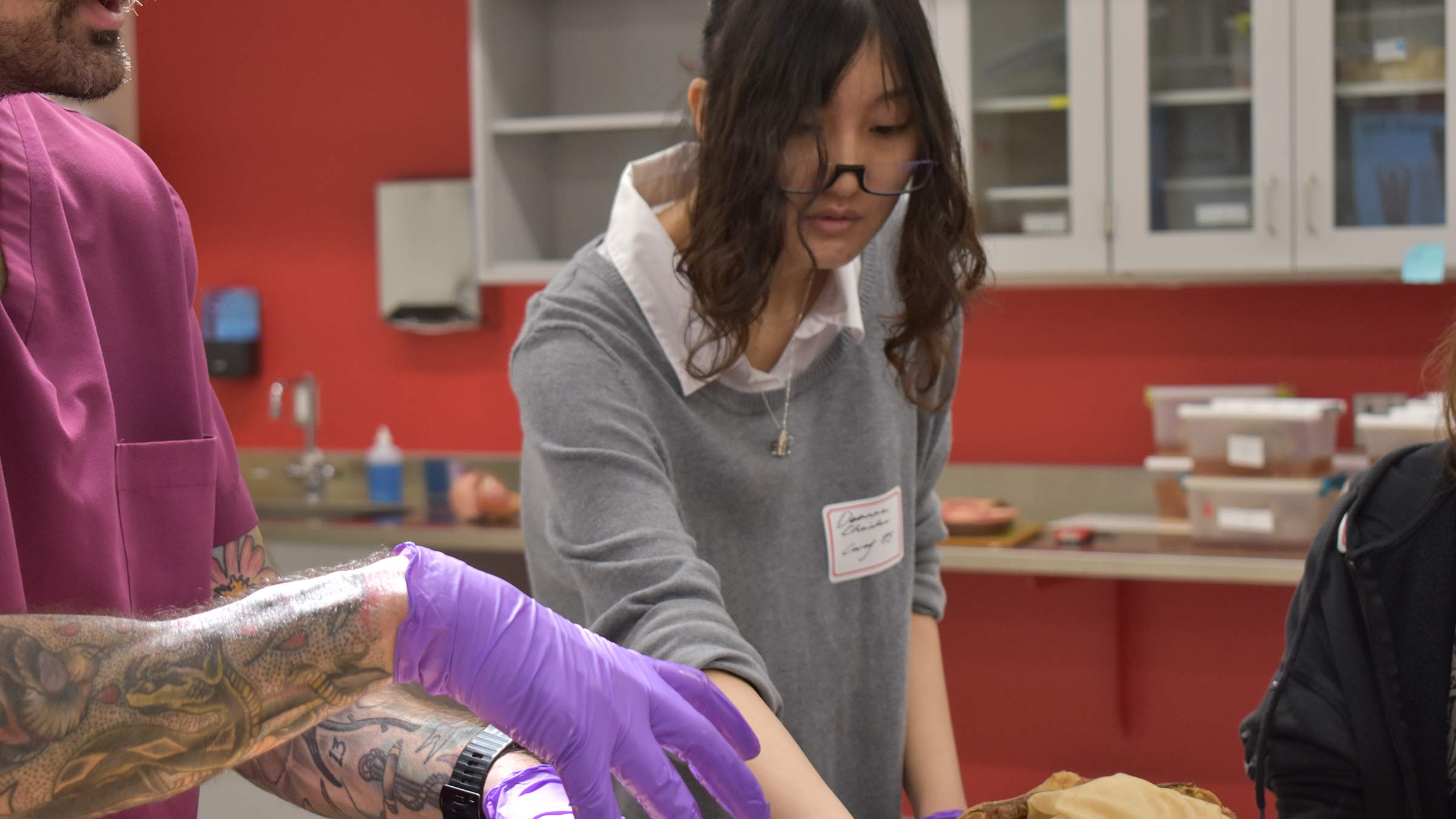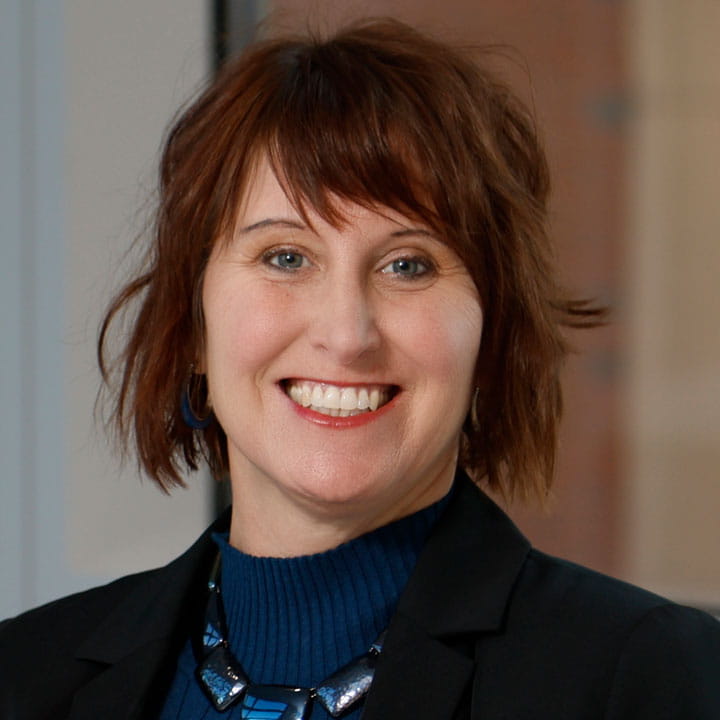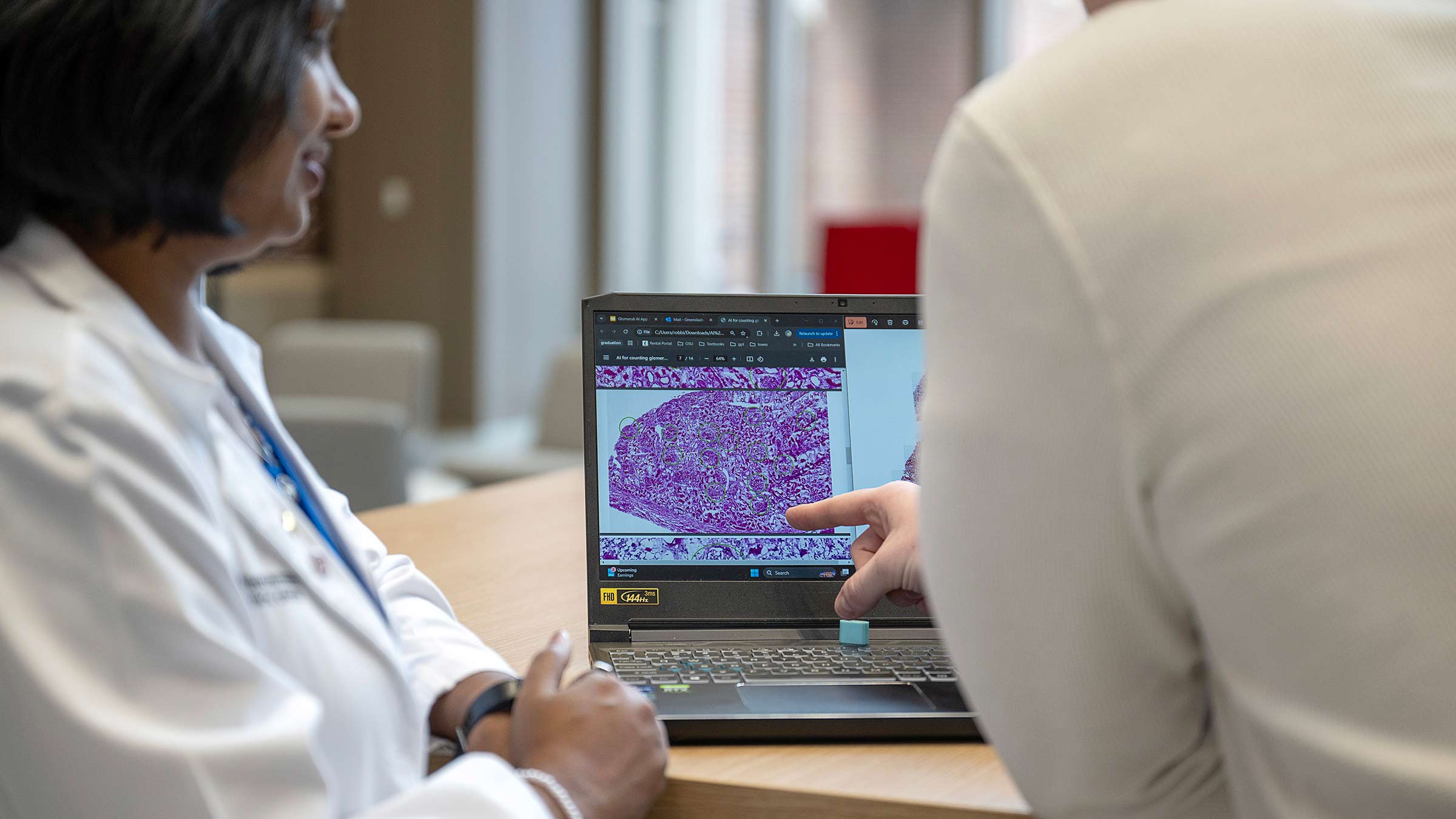
When viewed up close, you can see the different stories human organs tell about people’s health. The story deepens when you have the chance to touch and compare the textures and sizes between anatomical specimens.
Over 1,000 Ohio high school students recently attended Anatomy Outreach Days at The Ohio State University College of Medicine to experience this learning firsthand. By visiting stations with different specimens in the anatomy lab, they gained a deeper understanding of the workings of the human body. They also got to interact with anatomical organs and specimens donated to the college’s Body Donation Program.
Pilard Hanna, PhD, assistant clinical professor of anatomy dental education, is the Division of Anatomy’s director of Outreach & Community Programming. She knows firsthand how access to substantial experiences and activities help students ignite their passion for science — it helped her in high school discover that she would pursue education in the science, technology, engineering, math and medicine (STEMM) field. She loves watching the program — one of the largest in the nation — engage students, so they develop the ability to see themselves furthering their interest in science.
“This year, we had students from 26 schools who got the chance to apply classroom learning with what they saw and felt with their own eyes and hands,” Dr. Hanna says.
“We refer to the donated organs as gifts that teach. They further the understanding of human anatomy and basic science beyond what can be taught in textbooks,” Dr. Hannah says.
Human anatomy fosters deeper understanding of STEMM
Anatomy Outreach Days also inspire teachers to bring their students.
“The teachers are amazed by how much their students learn in just few hours,” Dr. Hanna says. “This year, we’re collaborating with medical illustrators, urology, internal medicine, emergency medicine and cardiothoracic surgery.”
Ashley Vannatta has been bringing her students to the program since it began. While earning her undergraduate degree in biology at Ohio State, she developed the foundation to then get her master’s degree in secondary science. To this day, she harnesses this knowledge to help students foster a deep understanding of how science and technology intersect with discovery by turning her classrooms into dynamic STEM labs.
This year, she brought 32 students from her anatomy class at Kenton Ridge High School in Springfield, Ohio. Vannatta says earning a spot to attend is based on the student’s class participation, test scores and how seriously they take the material.
“Getting to come here is a great motivator for them, many of whom are looking into studying pre-med and health sciences after high school,” Vannatta says.
“The space draws them in and exposes them to a college-level anatomy building and all the opportunities and state-of-the-art technology it brings,” Vannatta says.
Attending last year’s program solidified high school senior Drew Fansler’s decision to apply to study neurology and medicine at The Ohio State University, where he’ll start as a first-year student in the fall.
“It’s a very eye-opening and new experience you don’t get to experience every day,” Fansler says. “You’re not looking at a diagram in a textbook, but actually seeing and touching real anatomy.”

Chistopher Camm, a human anatomy and forensic criminology teacher from Carey Exempted Village schools, has been bringing students to Anatomy Outreach Days for over a decade. He says the program keeps enriching what’s offered with different labs and content, touching on varied branches of science.
“This program exposes learners to this at a time when they are considering what’s next,” Camm says. “It changed how my senior student, Deanna Chaialee, sees her path going forward.”
“I can see myself in neuroscience research. This program changed everything for me and made science real, and I want to learn more,” Chaialee says.
Hands-on learning with human anatomy
What they’ve been learning in class hits a new level of application when they arrive at the station led by Brad Loomis, MD, who just graduated from the College of Medicine and is heading into medical residency.
He gets the students’ attention when he shows them a typical liver and then two diseased livers. Students wear exam gloves to feel the organs with their own hands.
When he puts the liver rife with nodules and scars from cirrhosis in front of them, the students immediately reach in to feel the different textures and hardness of the specimens.
“The liver is a cool organ, and this is the first time they’re seeing it. I love witnessing their excitement,” Dr. Loomis says.
Building skills for success in STEMM
At Ohio State, the approach to STEMM blends theory and practice into activities with learners of all ages in the community. This helps develop an interdisciplinary perspective and critical thinking skills needed for success in STEMM fields and in life, including programs designed for high school students, such as summer camp experiences and health care career exploration, and programs to build research experience for undergraduate and graduate students.
“One student who joined our one-year undergraduate science program, ASPIRE, came to one of our anatomy outreach sessions,” Dr. Hanna says. “It was one of the main reasons why she applied, and she’s now a sophomore at Ohio State.
“These pathway programs give learners more hope and a second chance to reach their goals in a supportive environment, surrounded by peers who share the similar goals and challenges. Talking about my career and what I do is different than letting the learner experience my tasks in real life and see what a day in my career looks like.”






